Nieuw-Buinen
But neither Landsheer’s designs nor his commercial activities could prevent the trouble coming. Labourers became less inclined to do the hard work required for the meagre pay provided. Many left and those who stayed demanded pay rises. At the same time competition was fierce, rendering it impossible to raise prices and cover these higher costs.
In 1963 Goedewaagen decided to set up a subsidiary in Nieuw-Buinen, in the province of Drenthe. In this new factory a modern production line was set up to cut manufacturing costs. For several years good financial results were achieved, especially with mass-produced commodities.
Consumer society!
From the Fifties the Netherlands were in the lift economically. The average Dutchman never had so much money in his pocket before. But by the Sixties it turned out that everybody already owned the dinnerware they desired. And young people began to object to what they perceived as the consumer society around them. Grandmother’s old stuff was considered more attractive than Goedewaagen’s beautiful designs. Even among the establishment consumption and spending patterns changed. Complete china sets, once a must for every married couple, came to be thought of as dust traps. If they were bought at all, consumers preferred smaller sets made of chic foreign porcelain.



Plateelbakkerij Zuid-Holland was the first major victim in the Netherlands: it closed in 1964. This was a blessing for Goedewaagen for it removed a serious competitor.
The PZH estate was bought, enabling Goedewaagen to continue their former competitor’s Delft Blue product line successfully. This included the famous Delft Blue miniature houses that the Dutch national airliner KLM used as promotional gifts for its business class passengers. They provided a welcome addition to the company’s turnover. So, whereas the earthenware industry gradually collapsed, Goedewaagen managed to stay afloat.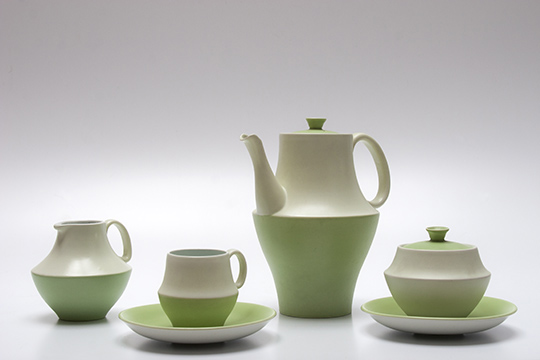
The deathblow
Around 1980 crisis hit the Dutch economy. A second oil crisis (1979-80) caused a dramatic increase in energy prices. This was the earthenware industry’s deathblow. One factory after another closed: Regina failed in 1978, Zenith in 1984. And so, in 1982, did Goedewaagen. This might have been the end, but for some initiatives that quickly managed to revive the company.
International competition
Competition with foreign manufacturers became fierce. In 1963 the Finnish manufacturer Arabia introduced its extremely successful Ruska dinnerware in the Netherlands. It even won that year’s Utrecht Annual Exhibition Prize for the most beautiful and well-considered design. The German firm Arzberg introduced Cannelee. Both sets of dinnerware were major commercial successes in the Netherlands too. And they were not the only ones. When the British pound collapsed in 1964, even the previously unaffordable products made by Wedgwood and Johnson Bros came within range for the average Dutch consumer.
coffee service 'Athene'
Zweitse Landsheer
1959
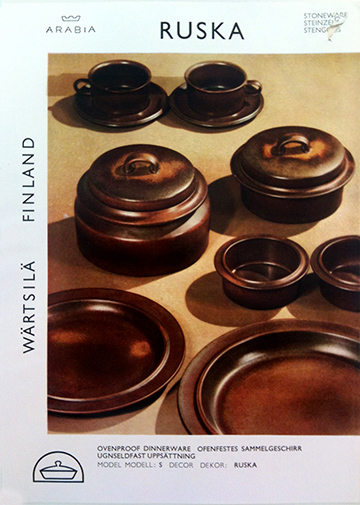
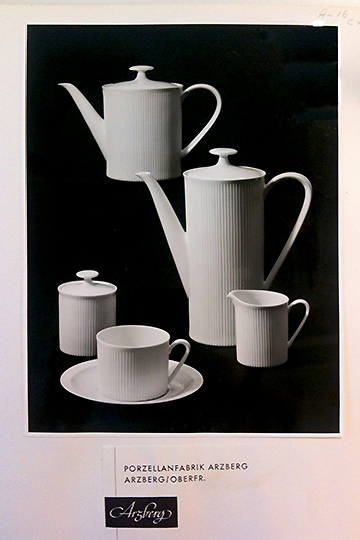
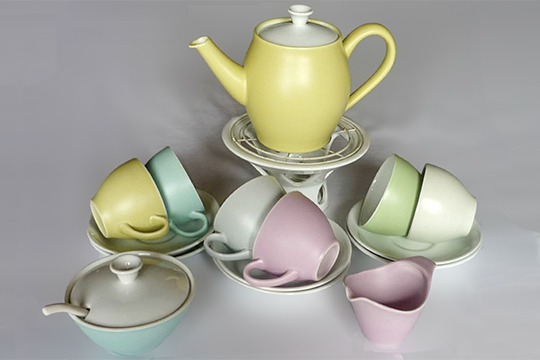
In 1957 Goedewaagen launched Fiësta, an existing china pattern but decorated in cheerful pastel colours and finished with a matt glazing. Cheerful indeed, but not very practical since the matt finish absorbed water and even some dirt.
coffee set Maestro, decor Fiësta,Zweitse Landsheer, app. 1957,
collection Bettie Meines,
courtesy Keramisch Museum Goedewaagen
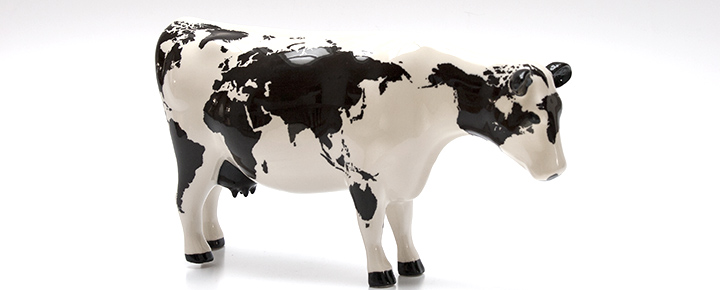
Goedewaagen price list
Sixties
collection K.M.G.
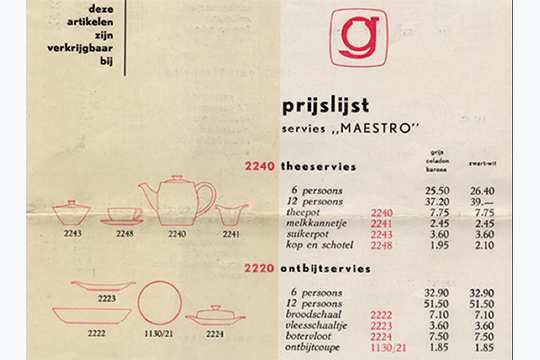
Increasing exclusivity
Increasingly, Goedewaagen moved upmarket. Marie-Thérèse van Glabbeek, in her book called ‘Goedewaagen’s gebruiksgoed’ (Goedewaagen’s commodity earthenwares), calculates that their products were on average 25% more expensive than those of their competitors Fris and Mosa. Such a price policy is viable only if the customer knows that these higher prices buy better products - stronger, of better design and more exclusive. So in order to convince the customer much money was spent on advertising. Goedewaagen invited many people to visit their factories, where Landsheer served as their host. In this capacity he received many groups from major Dutch women’s networks. But school groups visited as well. These were given tours and shown the slide presentation called ‘Good dinnerware in daily life’.
Goedewaagen
page 4
